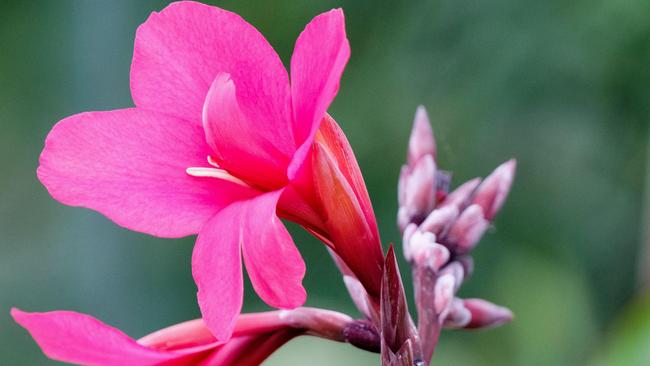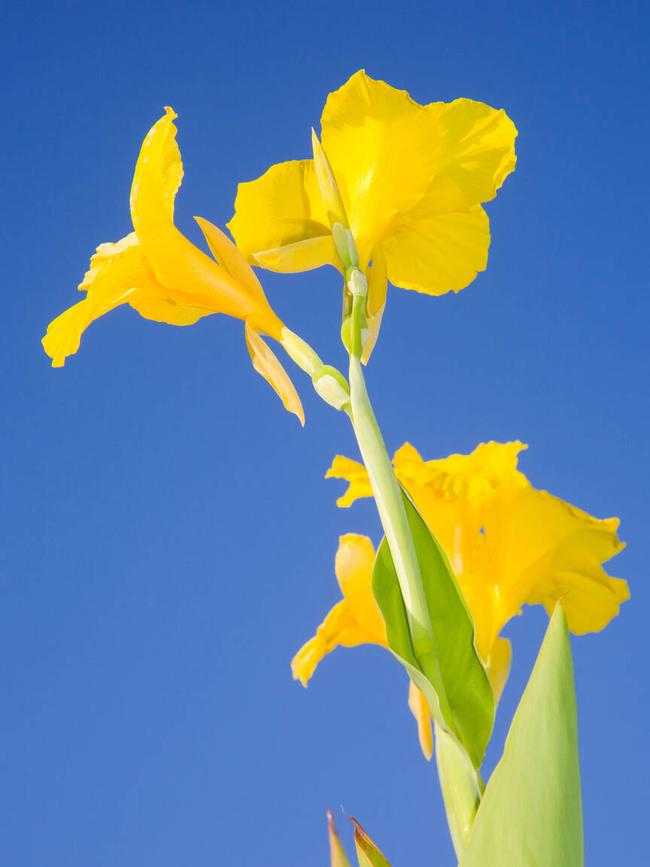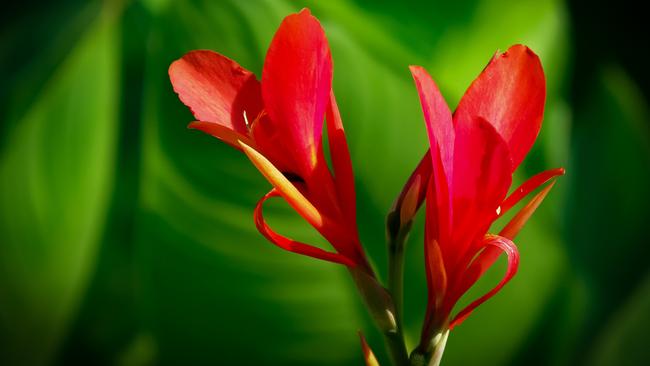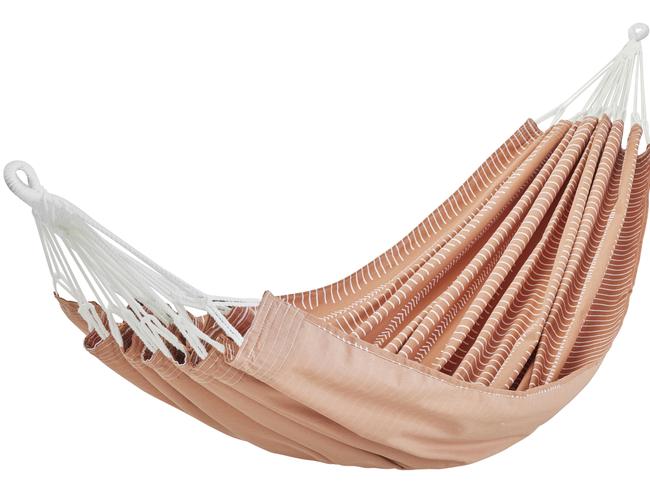Canna is an easy-care plant for a low-maintenance garden
You either love them or you hate them, but the canna’s oversized leaves and brightly coloured flowers offer luxuriant foliage in the garden.

Some plants you either love or hate, and cannas might be in that category. On the plus side, they’re easy-care plants with luxuriant foliage and tall, brightly coloured flowers. Their critics will accuse them of being lurid or weedy.
Although called canna lilies, these upright, clumping perennials are more closely related to gingers, heliconias and bird of paradise than lilies. All 10 Canna species are from tropical and sub-tropical regions of the Americas, but they’ve been grown for centuries across Asia and Africa, often as a food source for humans and animals. The swollen underground rhizomes of Canna edulis, also called arrowroot, are high in starch and prepared like potatoes. Arrowroot flour is a versatile, gluten-free flour, also used as a thickener and to make cellophane noodles.

Canna indica is known for its hard, black seeds, used as jewellery beads and in musical instruments. The bold plants with red or yellow flowers and green leaves became popular in Victorian times but are now considered weedy, being naturalised or invasive in many countries including Australia, especially in damp, swampy areas. The modern hybrids, bred from various species, are popular plants all over the world for their wide range of colourful leaves and vibrant flowers. They grow in most climates and are less likely to be weedy. Leaves can be green, bronze, burgundy or have multi-coloured stripes. The flowers come in reds, pinks, orange, peach, yellow, cream and white, some with spotted or bicoloured petals. There are hundreds of varieties, ranging from 45cm to 2m in height. Some of the most flamboyant are ‘Tropicanna’, whose leaves are striped in five bright colours, teamed with tangerine flowers, and ‘Tropicanna Gold’, with green and gold striped leaves and yellow-edged, orange flowers. Varieties with purple-black leaves and scarlet-orange blooms are also popular.

Cannas’ oversized leaves add drama to a garden, especially in combination with fine textured foliage or flowers and contrasting colours. Clumps of cannas are great for adding an exotic touch as backdrops, feature plants, in narrow spaces, or in mass plantings. Use them for poorly drained areas or to make a show in containers, teamed with colourful partners such as annuals, coleus or nasturtiums. Some aquatic varieties are grown for water gardens and ponds. The leaves of any variety work well in cut flower arrangements.
To encourage further flowering, cut off spent flowers at the next side shoot down, where another flower spike should emerge. In cold areas the fleshy stems die back in winter; in warm areas they usually become tatty by then and should be cut off at the base to encourage new stems to emerge in spring. You can divide clumps in winter.
Q&A
My recently planted Magnolia ‘Little Gem’ has leaf burn and they’re falling off alarmingly. Why? I added lots of Dynamic Lifter before planting and watered well.Jan Holmes, Brisbane
These symptoms are typical of fertiliser burn, likely if a lot was put in the bottom of the planting hole. It’s better to apply on top or mix with the soil. Fertiliser burn is made worse if the rootball dries out – after planting you need to water daily as if the tree was still in a pot, until the roots grow outwards. The fertiliser would be dissipating by now and it’s too hot to dig the tree up, so just keep it well watered and hope for recovery.
Runners of grasses from the paddock keep creeping under the steel edging around our garden beds. How can we get on top of the weeding with minimal use of herbicide? Poh Raggatt, Mornington Peninsula, VIC
The steel edging needs to go deeper or add some 50cm-deep root barrier a bit further out. To remove what has invaded, hand-weed persistently. The organic herbicides won’t really work on tough grasses; systemic glyphosate would. You could use a weed burner torch to scorch surface runners outside the steel edging.
My ‘Black Diamond’ crepe myrtle hasn’t had a bud or flower in three years. It’s in a sunny spot, fed well and mulched. I haven’t pruned it as I want it tall, not wide.Louise Shaw, Kiama, NSW
There’s talk on online forums about disappointments with the performance of this range of dark-leafed crepe myrtles; some seem to be comparatively slow and lacking vigour. They also need hot weather to flower well. Try some high-phosphorus fertiliser and perhaps, patience.

Send your questions to: helenyoungtwig@gmail.com or Helen Young, PO Box 3098, Willoughby North, NSW 2068. The best question for March wins a 100% virgin cotton hammock plus universal frame, worth $224 from Two Trees Hammocks.


To join the conversation, please log in. Don't have an account? Register
Join the conversation, you are commenting as Logout